Foraging wild mushrooms in the midwest might mean taking out the snowshoes, and you might not find much, but it’s still a fun adventure. And, when you do find those tough fungi still growing strong, it’s a moment to marvel and appreciate the hardiness of these species and Mother Nature. Most folks forgo winter mushroom foraging in the midwest due to the less than ideal weather conditions, but that just means there’s little competition.
Of course, it’s best to taper expectations if you live in any snowy winter wonderland. There are fungi growing out there, but finding them takes tons of patience, a hardy temperament to deal with the cold and a bit of luck. Most of the species that survive cold temperatures grow from wood or living trees, so don’t worry about digging through the snow in search of mushrooms. Mostly, you just need to look around while out in the forests.
Fungi rarely emerge through frozen wood, so once it’s super cold or below freezing all day long, it’s unlikely new mushrooms will appear. If you get a mid-winter thaw or rain, that’s a good time to go out looking.
This list is a general guide. Every year is unique to itself, and you may see some species outside their “normal” fruiting times. So much depends on when the real freezing temperatures settle in. If you have lots of warm days and rain, expect more fungi to appear. During some really mild winters, unexpected fungi fruit into early January.
Check out our guides for foraging in other seasons: Spring Mushroom Foraging in the Midwest, Summer Mushroom Foraging in the Midwest, and Fall Mushroom Foraging in the Midwest.

Winter Mushroom Foraging in the Midwest
Velvet Foot Enoki
The velvet foot is literally known as “the winter mushroom.” It thrives in cold weather, and it’s not uncommon to find them slightly frozen or under a thin layer of snow or ice. Keep an eye out for this winter mushroom all season long. The velvet foot enoki has an extremely dangerous lookalike, aptly named the deadly galerina. Only forage this species if you are beyond certain of your identification. When in doubt, always do a spore print!
If you’ve ever had the supermarket enoki, you might be surprised to learn this is the exact same species. Cultivated enoki looks like a completely different mushroom.

Late Fall Oysters
This greenish-yellow mushroom is not actually an oyster mushroom but is super widespread and edible. The late fall oyster mushroom is very hardy against the winter temperatures, fruiting when it’s cold (though not freezing). You may even find them frozen on the tree, still fine for eating, though almost wholly frozen through. The freezing actually probably helps preserve them for longer.
Too much freezing and thawing will cause the mushrooms to deteriorate terribly, so it’s kind of a roll of the dice with this one, especially if you’re experiencing lots of freezes and thaws. But, if you catch them just right, it’s a great, hearty mushroom find in the middle of winter.
The texture of late fall oysters is a wee bit slimy, but they’re great in stews to bulk them up or made into mushroom jerky. They are super dense, meaty, and a bit chewy.

Wood Ear
Wood ear is a prized edible species, though it’s not for everyone. It is slightly rubbery but also chewy and crunchy at the same time. It’s a real treat added to a warming winter broth, like miso or chicken soup. They’re also a medicinal species, traditionally used to treat high cholesterol, regulate blood sugars, and alleviate sore throats.
This is a brown, ear-shaped jelly fungus (it lives up to its common name!) that isn’t always easy to see since it blends in really well. Keep your eyes peeled for this one. Thankfully, wood ear mushrooms don’t deteriorate or decompose very quickly, so there’s a good chance of finding some excellent specimens.

Chaga
Chaga grows primarily on birch trees and is gathered for its medicinal properties. It is said that chaga should always be foraged in winter because that’s when it’s at its peak medicinal form. Winter is also one of the best times to hunt it because there aren’t leaves or foliage blocking your view.
The tree is also dormant in winter, so you don’t have to worry about damaging its growth as you harvest. But you still need to harvest the chaga responsibly and sustainably. Only take a small portion of the chaga, as it will continue to grow through the years if some is left behind.
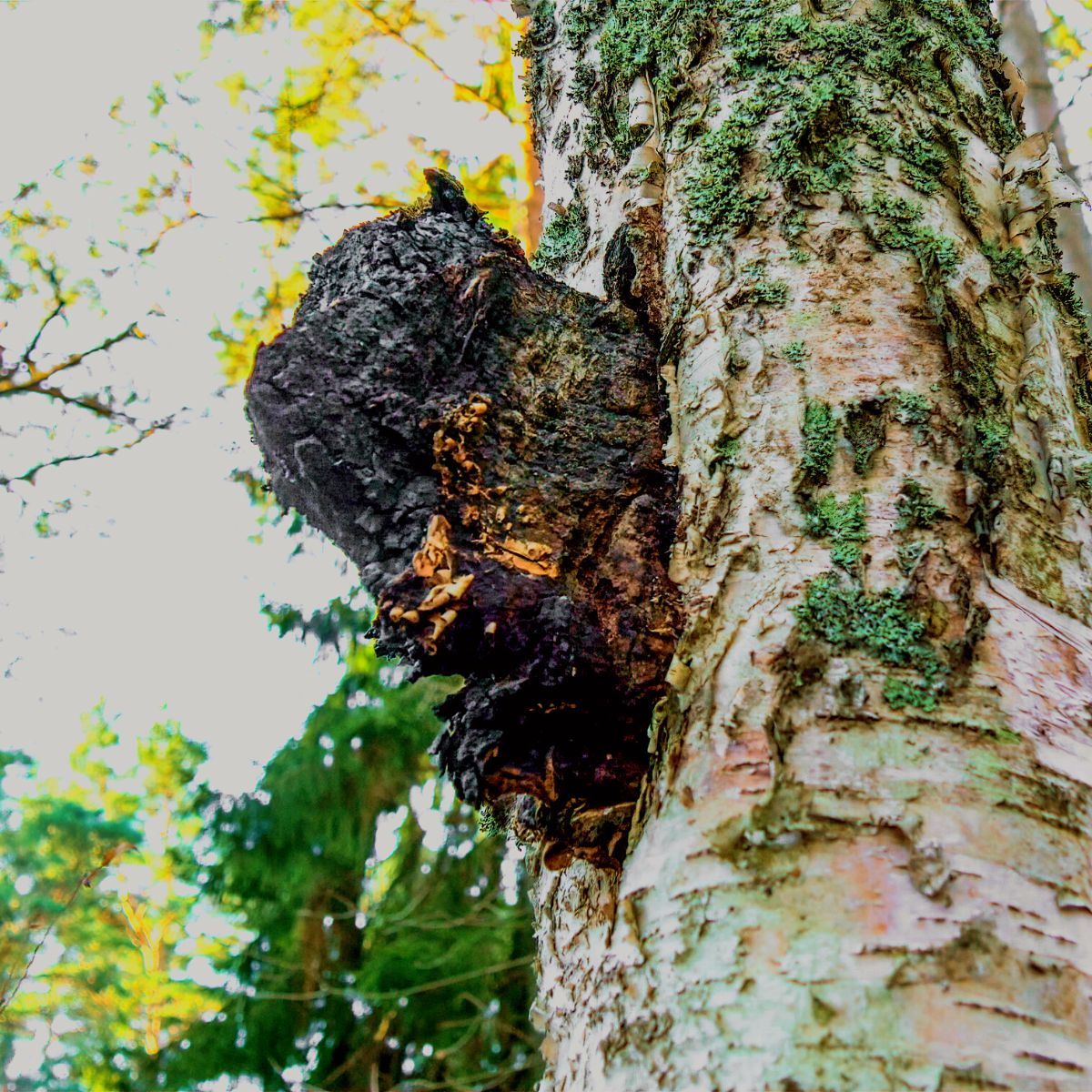
Turkey Tail
Turkey tail grows year-round and is a small bracket mushroom that remains viable for a long time. So, even if it’s not actively growing, you may find growth from earlier in the season that is still good to harvest. Turkey tail is collected for its medicinal properties, and it might be one of the few species you find on a deep winter walk. Make sure you brush up on what false turkey tail looks like and how to tell the difference — there are a lot of small, bracket polypores in the woods.

Witches’ Butter
The super bright orange to orange-yellow goopy, jelly-like fruiting bodies of witch’s butter are hard to miss. The vibrant color really stands out since there’s not much else for color in the woods. Against a snowy backdrop, they are very noticeable.
Witches butter isn’t a prime edible species; it’s pretty slimy, small, and there isn’t much body to it. However, it is often found fruiting in large clusters, so if you’re desperate, there it is. It can be added to soups and stews to bulk them up or tossed in with a stir-fry. Some consider these little bright orange blobs to be a delicacy. They’re worth a try at least once and an excellent survivalist species to know.

Wood Blewit
The wood blewit, aka the purple nudist, appears only after the heat of summer has passed but doesn’t usually hang around for the deep cold winter nights. This is usually an early-season winter mushroom. In warmer winters, it may appear through February or March. It is not uncommon to find this brilliantly colored mushroom in the middle of winter with a layer of snow or ice on top, and it’s still just fine.
Wood blewits are a good edible species with a flavor similar to the common store-bought button mushroom. They’re not at the top of the edibles list, but when there is a little to choose from in winter, finding a patch of wood blewits is marvelous.
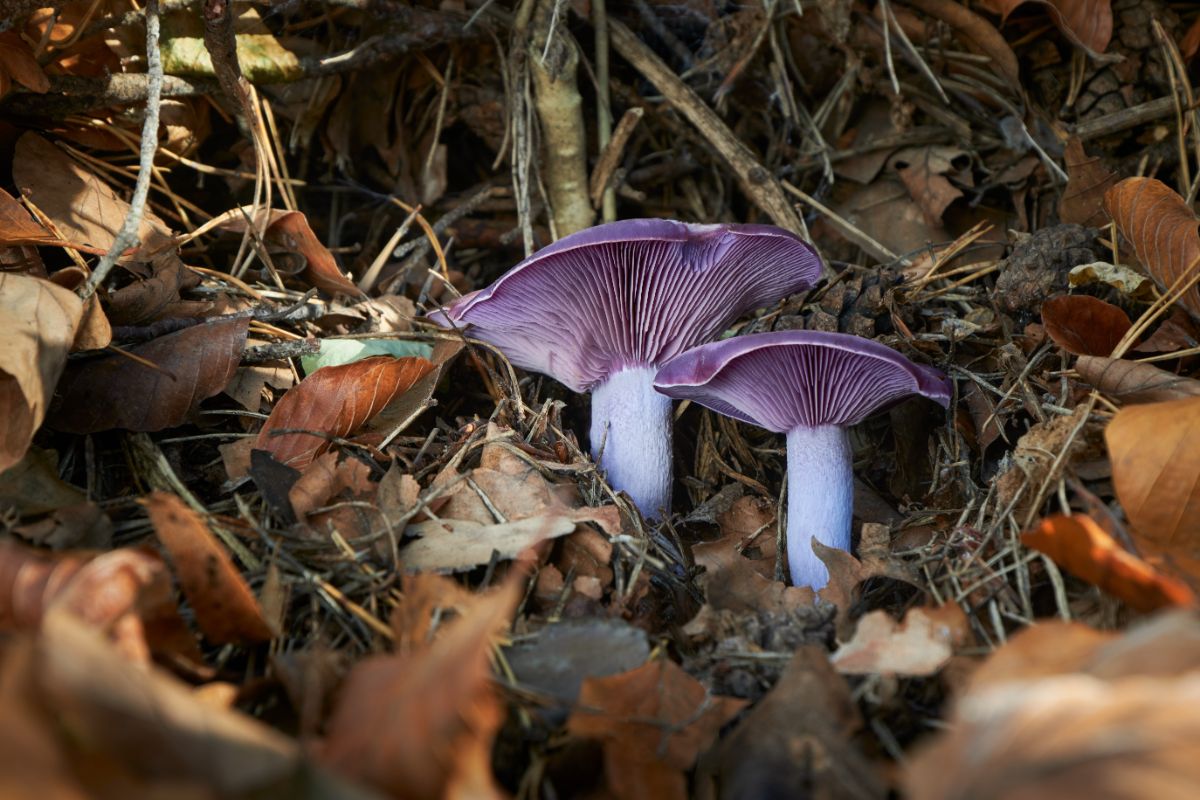
Birch Polypore
This birch tree fungus is an excellent medicinal species that is widespread throughout the midwest. Birch polypores are common in winter because they are tough and don’t decompose very quickly. In the spring, new fruit bodies appear and persist as long as they’re getting the needed nutrients and water. The only downside to winter foraging of these is that you may find them too far gone. If they’re black or brown or look decayed, mark the spot and look earlier the following year. Birch polypores prefer dead and dying birch trees, so look for those struggling trees.

Amber Jelly Roll
This squishy, jelly-like brown fungus loves the cold. The amber jelly roll is not a top edible species, but it is common and widespread in midwestern forests. Unfortunately, it’s not even a substantial species; you’ll have to forage a bunch to make a meal out of these. But, it is entirely edible, so if you like trying new things, or it’s the end times and food is scarce, you can rest assured this species is suitable to forage. The brown amber jelly roll blends right into the dead logs and branches it grows on, so it can be hard to spot.

Foraging Resources
If you’re new to mushroom foraging, here are some excellent guides to get started: How To Be A Successful Mushroom Forager, Mushroom Foraging 101, and Mushroom Identification Pictures and Examples.
This guide to the best identification books by region will help you find the best guides for you.
Curious about winter foraging in other areas? Check out our guides for across the US.
- Winter mushroom foraging in New England
- Winter mushroom foraging in the Southeast
- Winter mushroom Foraging in the Pacific Northwest
- Winter mushroom Foraging in the Southwest
Wintertime Alternatives For Mushroom Fanatics
As you can see, winter mushroom foraging might be slim picking but with perseverance, you can still bring up some gems. However, if it’s just too cold and miserable to go outside and even look, don’t worry. You can still have mushrooms in your life even when the weather isn’t working in your favor.
Winter is an excellent time to try out some in-home Mushroom Growing Kits.




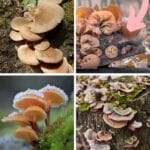
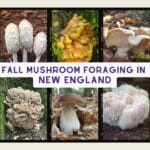


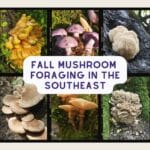
Jay Kidder
Very good page. I’m sure a future resource for me.. Jay Wichita, Ks. The Arkansas River runs behind my house. Always mushrooms of all kinds . Once the morels are gone the others flourish. Ident is iffy for me.
Jenny
Thank you and I’m glad it is useful to you! In the spring (and summer and fall), I’ll be posting those seasonal guides, so keep a watch for them. Then you’ll have a good starting point for finding all the good edibles. River waterways are an awesome place to forage!